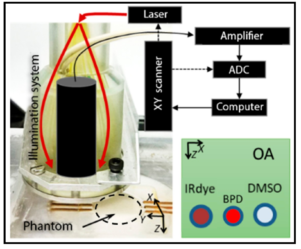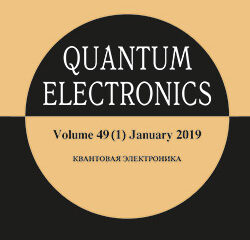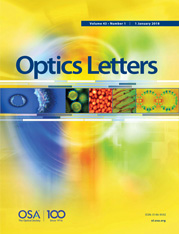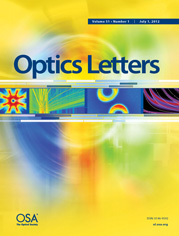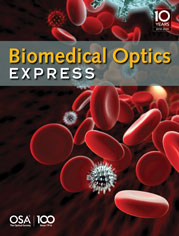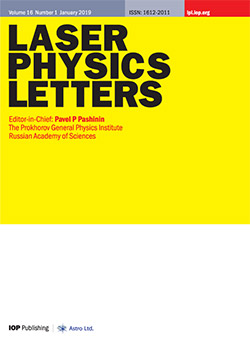We propose a laser optoacoustic method for the complex characterization of crude oil pollution of the water surface by the thickness of the layer, the speed of sound, the coefficient of optical absorption, and the temperature dependence of the Grüneisen parameter. Using a 532 nm pulsed laser and a 1–100 MHz ultra-wideband ultrasonic antenna, we have demonstrated the capability of accurate (>95%) optoacoustic thickness measurements in the 5 to 500-micron range, covering 88% of slicks observed during 2010 oil spill in the Gulf of Mexico. In the thermal relaxation regime of optoacoustic measurements, the value of optical absorption coefficient (30 mm−1) agreed with the data of independent spectrophotometric measurements, while the sound speed (1430 m/s) agreed with the tabular data. When operating in a nonlinear regime, the effect of local deformation of the surface of the oil film induced by heating laser radiation was revealed. The dose-time parameters of laser radiation ensuring the transition from the thermal relaxation regime of optoacoustic generation to nonlinear one were experimentally investigated. The developed OA method has potential for quantitative characterization of not only the volume, but also the degree and even the type of oil pollution of the water surface.
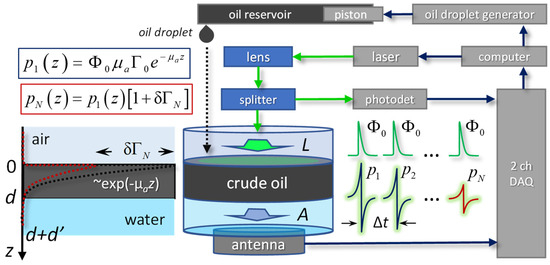
Subochev P., Kurnikov A., Sergeeva E., Kirillin M., Kapustin I., Belyaev R., Ermoshkin A. and Molkov A. Optoacoustic Sensing of Surfactant Crude Oil in Thermal Relaxation and Nonlinear Regimes, Sensors 2021, 21, 6142.
Follow the link below to find out more:

